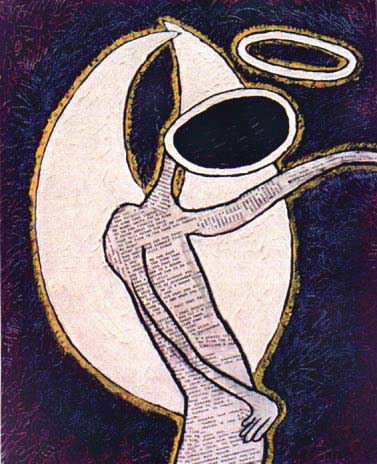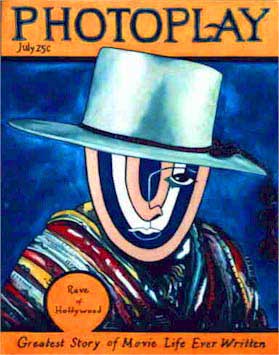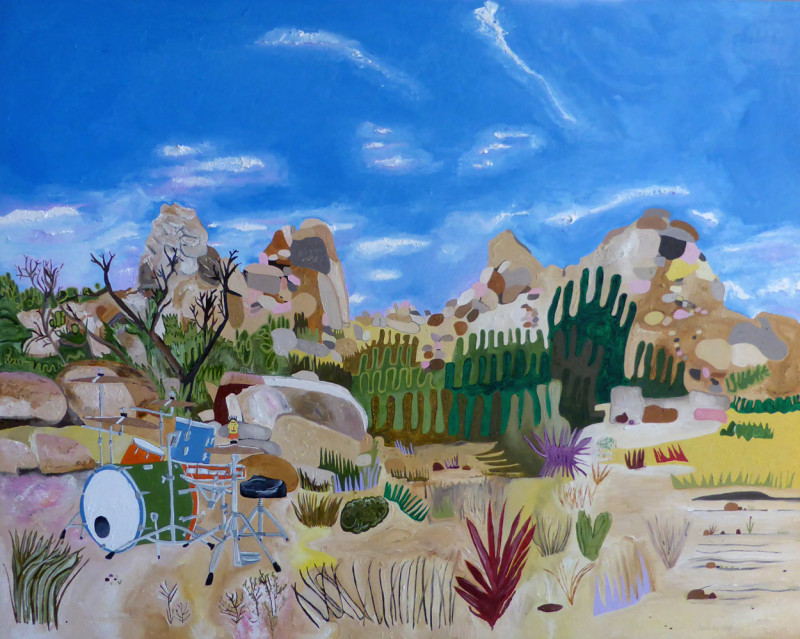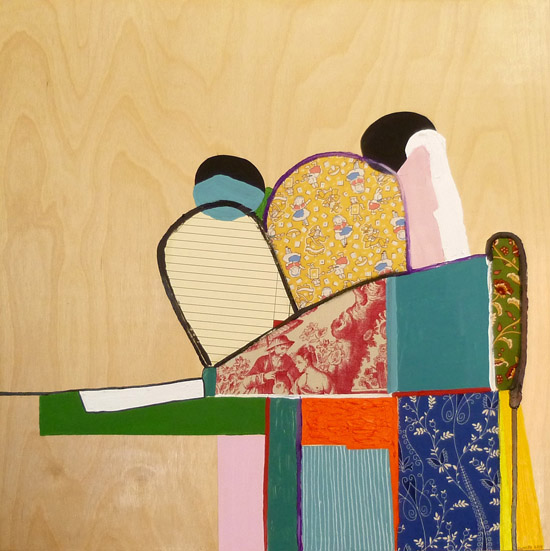The other day I was talking about making plans. I mentioned that I began the thing with a whole Questions and Answers section, which was sorta based on figuring out how to solve some of the problems that might be blocking me from achieving my goals.
Well now that I’m feeling that my “Artist’s Plan” is wholly intact, I am now working my way back up to the Questions and Answers – stuck, essentially on the “answering” part. So I had this great idea that I might answer them whilst blogging, perhaps one ridiculous question per blog entry, and see what happens.
When I write, I never plan what comes out of me and I tend to resolve my issues as I type. Maybe this will be a good way to find the answers to the questions that plague me so. There are about seven questions. Some are two-parters. Some of the questions came to me as I began revamping my website, and I may have mentioned this in the past – because it came up during the time I was coding the site for SEO purposes. It was how I strongly identified as a contemporary Los Angeles artist. And that’s how I basically titled my site. But soon it began to dawn on me:
what specifically makes me a Los Angeles artist?
This question began to really wear on me because I am not a realist painter making landscapes or LA cityscapes or Hollywood personalities, or anything that would be so blatant as to make me an obvious Los Angeles artist. Yet, there’s nothing on God’s green Earth that could ever drag me from identifying as this description (“Los Angeles artist”) – emotionally anyway. So how can I reconcile this?
Or is it already reconciled? I wanted to take a good hard look.
Beside the fact that I was born and raised here, I have also lived in several if not dozens of LA’s neighborhoods both with my family moving place to place, and after I left their house, like some kind of rolling stone. Before having a car, I really lived mostly on the streets. I think you live more real life that way.
I always wrote in some little notebook in some sleazy spoon — coffee shops that don’t even exist any longer. They were all once practically historical landmarks. So much of my inspiration came out of those places. And my roots grew from a few of the public libraries, where I was actually learning to read in private since I was so dyslexic, I couldn’t possibly let anyone know about it in public school. It would have been much too embarrassing. I would have lost what “cool” I thought I had, which was really none.
The public library was where I discovered American author Charles Bukowski who became like a surrogate father to me. I buried my nose in everything he ever wrote, and I related to every word he had to say since pretty much everything he wrote was semi-autobiographical. He wrote in a genre that walked the line between fiction and creative non-fiction and you could feel the Truth and the genuine pain inside of the pages. Now, knowing his stories, I know that he couldn’t have written them any other way without putting on airs, and yet if he opened up completely as a straight forward memoir writer, no one would be able to stomach it. Some may not have even believed it. Some still don’t.
Bukowski also grew up in Los Angeles and he wrote about it quite a bit. I idolized him as a writer and an artist. He had the kind of artistic integrity I too was striving for because I had to be tough to get through the shit I was going through. Life wasn’t easy at 15. If I had one of his books in my backpack, it was like packing a gun. I was armed and dangerous. I was safe.
I was working with my my father Downtown at 9th and Los Angeles Streets cutting patterns on the 3rd floor of the Manufacturer’s Bank Building. And this was back when the garment industry was a bustling business. Women’s high fashion was actually manufactured in the heart of LA and nothing was sent overseas back then. Granted, it was mostly jobs for immigrants, and they were all paid minimum wage. It was the designers that got the big money. But if you were someone like my father, a foreman of the cutting room floor, you could manage a small mortgage in a suburb about 20 miles outside of town, and he did, but my mother worked too. We weren’t quite middle class since both my brother and I worked too to help pay the bills. We had worked since we were little tots, which was totally illegal, but we did it anyway. We were definitely a “working class” family, but we owned our own home thanks to the GI Bill, as my father was a WWII Vet, so things weren’t so bad for us.
The materials from the cutting room would soon enter into my artwork, but not before I went through a series of “Lost Angels,” which I did all through my 20s, and these were based on a kind of beatniky character from the streets of LA that was a kind of broken artist – semi-autobiographical of course. “Pre-Moppet” I guess you can say.
Many times the body or the background would be filled with prose, and the face was a black hole, or just filled in black to represent the “faceless artist.” sometimes there were scraped lines inside. I think that was rain to make it all the more melodramatic. It was about all artists and writers, musicians too, that were trying to scrape their way through the city and feeling unrecognized, but with so much to give. I lived among them and I was one of them, scraping by, often starving. But no matter how broken these angels were, they remained angels. Sometimes they’d even have doubled wings – angel wings with bat wings too, which meant they were really feeding on a dark life. All of these things had some stupid significance to me somehow.
At certain points of making this series, because they were years in the making, the character took on the life of a love relationship that had gone very bad, and the angel had become my ex-lover and so I began to torture and/or expose him in the paintings. The work started to become darker and even sort of sick because I was so hurt and obsessed with the pain I was experiencing; the angel became my enemy. An enemy that I loved, or used to love, but wanted to dissect like a frog. How does this make me a Los Angeles artist? It doesn’t. I just got side tracked for a second there. Forgive me.
I then started to make a small series of “Target Headed” people that no one understood, but it was based on iconoclasts or characters that would be under scrutiny at some point or another.
I did the Los Angeles artist and even a couple of Hollywood legends like Rudolph Valentino and Theda Bara. I did a lot of different characters now that I think of it, everyone from Micky Mouse, the Beatles, the Pope, Uncle Sam, and on and on. How did this make me a Los Angeles artist? I have no idea.
Having a face like a target, no one understood the point of this. It was difficult to get my point across in that series of paintings. I tried to practice capturing a whole face in one eye and a gesture of a black line for the nose and lips, which was a challenge. I was trying to capture people that took risks, good or bad. People that put themselves in the public eye only to be targets of love and hatred, but they took that risk anyway. I think it was the beginning of painting narratives for me.
But eventually came the work with all the patterns in them and I think that’s what marked me as an LA artist most.
It all started one day when I decided to build out my garage in San Pedro to look just like the workshop where I worked with my family when I was young. It began as an experiment really and I didn’t even know if I was going to get art out of the deal. It was kind of a therapy project at first. But art did come and for the next several years I made the pattern paintings. Very out-of-the-box for me, but it began a full transition of my work from there on out. I figured: paint what you know.
And I am still using the pattern paper. I can’t seem to get away from using those textile materials. It seems to be in my blood, whether it is because of a sense of place or a sense of family and work, or both.
I’ve also been addressing Joshua Tree, which is a huge part of the Los Angeles culture because it is within close range of LA and many artists here have studios there and show in museums here and are just attracted to the Morongo Basin/high desert. It’s filled with LA artists. They are drawn there. There is something about that place, something magically artistic that brings us there.
Lately I have been most interested in the landscape, not just Joshua Tree, but now in my own backyard and I plan to start incorporating Los Angeles into what I’ve been doing with my mixed media collages. I just don’t think I can get to them until 2016. Ha! I’m busy trying to get the rest of this work done for my new solo show at the end of November.
But I’d say that within all of the art I make, the roots are still strongly in Los Angeles. And I think I’ve answered my question. What specifically makes me a Los Angeles artist? Well, all this stuff I just specifically mentioned. The next question I suppose I have then, is that seen in the work?
I don’t think I’m objective enough to see it if it’s there. So, is it? You tell me.








